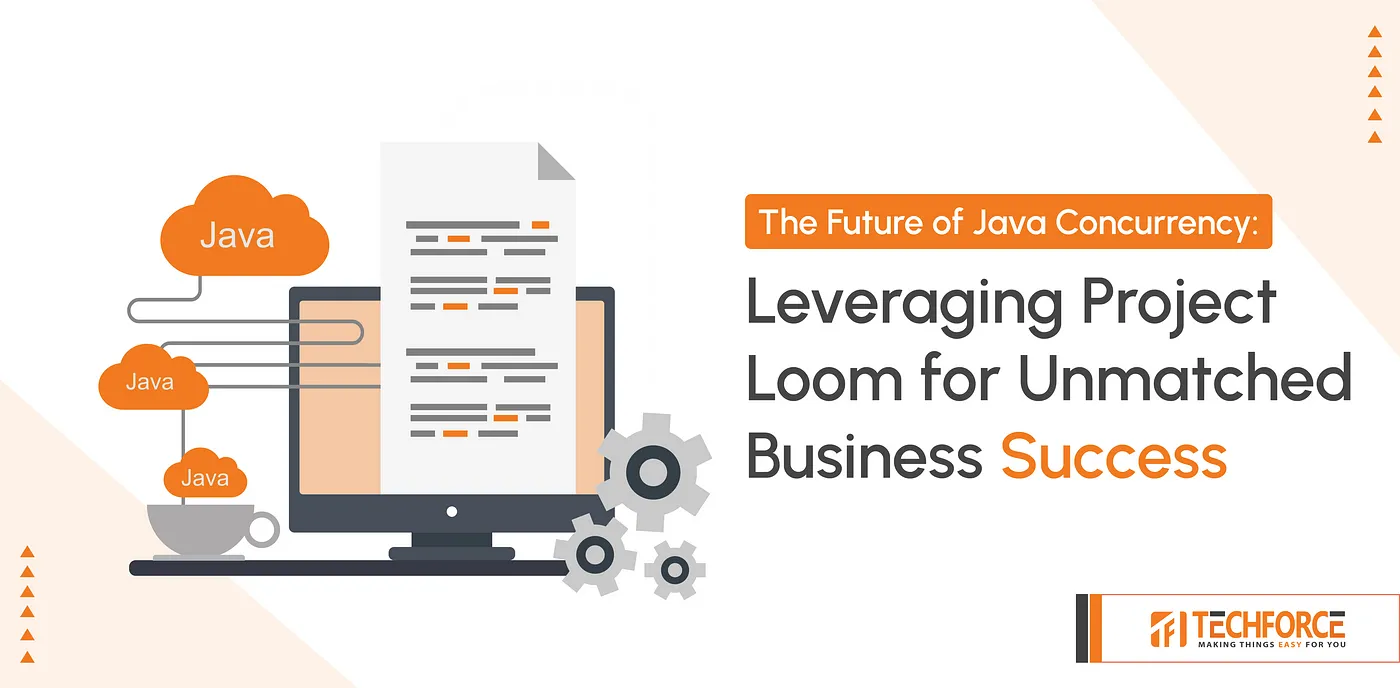The Future of Java Concurrency: Leveraging Project Loom for Unmatched Business Success
Introduction
Welcome, fellow Java enthusiasts and code wranglers! Today, we dive into the wondrous world of Project Loom. No, it’s not a revolutionary new weaving technique — though it could weave your code into a more efficient and scalable masterpiece. In this blog, we’ll unravel the mysteries of Project Loom, exploring its potential to revolutionize concurrency in Java applications. So, grab your coffee, and let’s embark on this journey through the threads and fibers of modern Java!
Brief Overview of Project Loom and Its Goals
Project Loom aims to simplify concurrency in Java by introducing lightweight, high-throughput, user-mode threads called fibers. Imagine juggling fewer chainsaws and more tennis balls; that’s the kind of relief Loom promises to bring to Java developers. Traditional Java concurrency can be a beast, but Loom is here to tame it with a fresh, intuitive approach.
Importance of Concurrency in Modern Applications
In our fast-paced digital era, applications must handle a multitude of tasks simultaneously. Whether it’s processing transactions, handling user requests, or managing data streams, concurrency is crucial. But traditional concurrency methods can be complex and inefficient, often leading to performance bottlenecks and developer headaches. Enter Project Loom, with a promise to make concurrency as easy as pie (and who doesn’t love pie?).
Understanding Project Loom
What is Project Loom?
Project Loom is an ambitious initiative by the Java community to overhaul the way we handle concurrency. It introduces fibers — lightweight, user-mode threads that are much cheaper and more scalable than traditional OS threads. Imagine running thousands or even millions of these fibers without breaking a sweat. That’s the magic of Loom.
Key Features and Differences from Traditional Concurrency Models
Loom’s fibers are designed to be cheap and plentiful, unlike traditional threads that can be resource-heavy and limited in number. Here are some standout features:
- Lightweight: Fibers consume minimal memory and CPU resources.
- Scalable: Easily handle millions of concurrent tasks.
- Simplified Concurrency: Write synchronous code that behaves asynchronously.
Think of it this way: traditional threads are like heavyweight wrestlers — strong but slow and resource-hungry. Fibers are like ninjas — agile, efficient, and able to handle numerous tasks with ease.
Benefits of Using Project Loom
- Performance: Enhanced performance due to reduced overhead.
- Simplicity: Write easier-to-read and maintainable synchronous code.
- Scalability: Scale your applications effortlessly with thousands of fibers.
Getting Started with Project Loom
Setting Up Your Development Environment
First things first, let’s set up the environment. To get your hands dirty with Loom, you’ll need the latest JDK that supports Project Loom. Follow these steps:
- Download the latest JDK: Head over to the official Project Loom page and grab the latest build.
- Install the JDK: Follow the installation instructions for your OS.
- Configure your IDE: Make sure your IDE (like IntelliJ IDEA or Eclipse) points to the new JDK.
Congratulations! You’re now Loom-ready.
Writing Your First Loom-based Application
Let’s start with a simple example to demonstrate the power of fibers. Here’s a “Hello, Loom!” program:
import java.util.concurrent.Executors;
public class HelloLoom {
public static void main(String[] args) throws InterruptedException {
var executor = Executors.newVirtualThreadPerTaskExecutor();
executor.submit(() -> System.out.println("Hello, Loom!"));
executor.shutdown();
}
}
This tiny program uses Loom’s virtual thread executor to print a message. Simple, right? Yet, under the hood, it’s leveraging the full power of fibers.
Migrating Existing Applications to Project Loom
Steps to Transition from Traditional Concurrency to Loom
Transitioning to Loom doesn’t have to be a Herculean task. Here are some steps to guide you:
- Identify Concurrency Hotspots: Pinpoint where your application could benefit from fibers.
- Refactor Gradually: Start by replacing traditional threads with virtual threads in isolated modules.
- Test Thoroughly: Ensure your refactored code behaves correctly under load.
- Optimize: Fine-tune your fiber usage to maximize performance.
Remember, Rome wasn’t built in a day, and neither will your Loom-based application. Take it step by step.
Best Practices and Common Pitfalls
- Avoid Overhead: While fibers are lightweight, creating millions of them unnecessarily can still incur overhead.
- Resource Management: Be mindful of resource handling within fibers.
- Concurrency Control: Use appropriate synchronization mechanisms to avoid common concurrency pitfalls.
Think of fibers as kittens: cute, efficient, and capable, but let’s not unleash too many at once!
Real-World Use Cases
Case Studies of Project Loom in Action
Let’s explore some real-world examples where Loom has made a significant impact:
- E-commerce Platforms: Improved handling of concurrent user requests, resulting in faster page loads and smoother transactions.
- Financial Services: Enhanced performance in processing simultaneous transactions and real-time data analysis.
- Social Media Applications: Better scalability in managing concurrent user interactions, leading to more responsive user experiences.
Performnce Improvements and Business Benefits
Businesses adopting Loom have reported:
- Reduced Latency: Faster response times due to efficient concurrency management.
- Cost Savings: Lower infrastructure costs thanks to better resource utilization.
- Developer Productivity: Easier concurrency management leads to quicker development cycles and fewer bugs.
Future of Project Loom
Upcoming Features and Roadmap
The Loom team is continuously innovating. Some exciting features on the horizon include:
- Improved Debugging Tools: Enhanced tools to troubleshoot fiber-based applications.
- Better Integration: Seamless integration with other Java concurrency tools and frameworks.
- Community Contributions: Regular updates based on community feedback and real-world usage.
The future looks bright for Loom, with ongoing improvements that promise to make concurrency even more accessible and powerful.
Community Insights and Contributions
The Java community has embraced Loom with open arms. Developers are sharing their experiences, contributing code, and helping to shape the future of this exciting project. Join the conversation, contribute your insights, and be part of this groundbreaking journey.
Conclusion
In summary, Project Loom is set to transform how we handle concurrency in Java applications. Its lightweight, scalable fibers offer a compelling alternative to traditional threads, making it easier to build high-performance, responsive applications. So, what are you waiting for? Dive into Project Loom today, and let your Java applications soar to new heights!
And remember, as they say in the Loom community: “May your threads be light, and your fibers be plenty!”
Ready to get started? Head over to the official Project Loom page and begin your journey today. Happy coding!
If you’re ready to take your Java applications to the next level, explore Project Loom and see how it can benefit your business. For more advanced Java development solutions, visit TechForce Global and explore our Java Development Services.
 Manish Mori
6 Aug 2024
Manish Mori
6 Aug 2024
 US +1 (630) 296 6606
US +1 (630) 296 6606
 India +91 (79) 48904529
India +91 (79) 48904529
 Poland +48 (730) 059 665
Poland +48 (730) 059 665
 reach@techforceglobal.com
reach@techforceglobal.com
 +1 630 303 7389
+1 630 303 7389

 Calendly
Calendly
 LinkedIn
LinkedIn
 Whatsapp
Whatsapp
 Fintech
Fintech
 Education
Education
 Ecommerce
Ecommerce
 Healthcare
Healthcare
 Travel and Hospitality
Travel and Hospitality
 Public Sector
Public Sector




